Do you have a question about the Fronius TRANSTIG 2000 and is the answer not in the manual?
| Welding Process | TIG, MMA |
|---|---|
| Input Voltage | 230 V |
| Input Frequency | 50/60 Hz |
| Welding Current Range (TIG) | 5 - 200 A |
| Welding Current Range (MMA) | 10 - 180 A |
| Rated Welding Current | 200 A |
| Open Circuit Voltage | 70 V |
| Protection Class | IP 23 |
| Insulation Class | F |
Covers general remarks, intended use, owner/personnel obligations, PPE, and informal safety measures.
Details risks from noxious gases, flying sparks, mains/welding current, and specific danger spots.
Focuses on precautions for installation location and safe operation in normal conditions.
Covers safety inspections, alterations, spare parts, calibration, CE marking, and copyright.
Provides an overview of the welding machine's design, construction, and compact features.
Highlights specific benefits like low consumption, high efficiency, and capabilities for TIG/electrode welding.
Explains the internal electronic process from mains voltage to output current.
Covers HF interference, electrical work, mains voltage, and fuse protection requirements.
Details protection class, open-air operation, cooling, dust, and stability for machine setup.
Detailed illustration and numbering of controls on the Magic Wave 2000 Fuzzy front panel.
Detailed illustration and numbering of controls on the Transtig 2000 front panel.
Explains the function of digital meters, selector switches, and LED indicators.
Details the functional sequence for 2-step and 4-step welding modes, including variants.
Procedure to access pre-setting, Level 1, Level 2, and Level 3 program levels.
Lists adjustable parameters for TIG and electrode welding modes.
Details parameters for the standard Fronius program for GAS, Hti, HCU, UPS, SCU, etc.
Explains accessing program levels and activating the electronic codelock for machine security.
Describes connection points for TIG torch, sockets, and remote control units.
Lists available remote control units: TR53mc, TPmc, TR50mc, TR51mc, TR52mc.
Details external setting facility for welding current, AC balance, and AC frequency.
Instructions for connecting and operating various remote control units with the power source.
For continuous adjustment of pulsing current, frequency, and background current.
Allows pedal control of current regulation, start arc, pulse current, and crater current.
For automatic spot-welding sequence, setting current and time.
Explains pulsing current, frequency, duty cycle, and functional sequences for 2-step/4-step modes.
Details functional sequence for 2-step operation with pedal control of current and crater-fill.
Functional sequence for pedal control of current, start arc, and crater-fill.
Describes the automatic spot-welding sequence and limitations.
Details the sequence of operations for automatic spot-welding using the torch.
For manual electrode and TIG welding, controlling main current and arc force.
Dial for continuous adjustment of welding current for TIG and Electrode modes.
Influences short circuit amperage for arc characteristics, with examples for different electrodes.
Covers safety precautions for HF ignition and the initial setup procedure.
Describes the process of igniting the arc using HF ignition without touching the workpiece.
Details igniting the arc by touching the workpiece with the electrode.
Explains monitoring function and procedure for TIG welding without HF.
Steps for connecting cables, selecting polarity, setting controls, and initiating welding.
Precautions regarding the tungsten electrode being live during manual electrode welding.
Procedure for exchanging electronic modules, requiring qualified personnel and safety precautions.
Guidelines for checking mains plug, cables, torch, and cleaning the unit's interior.
Lists LED indicators and their functions related to power supply and control units.
Identifies causes and remedies for the machine not powering up or responding to the torch trigger.
Addresses faults related to absence of welding current, including overheating and overvoltage.
Covers issues with gas flow, poor arc ignition, and weak or absent HF.
Addresses malfunctions in welding current regulation and remote control unit operation.
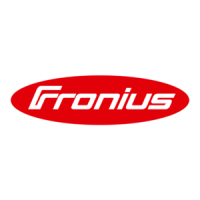
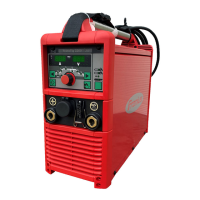

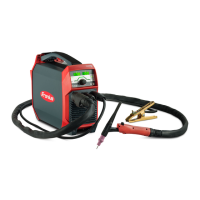

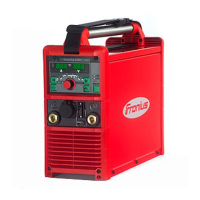
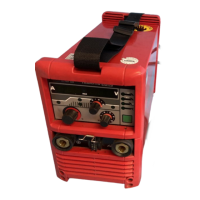



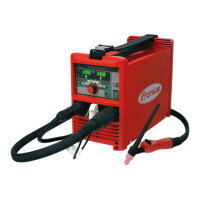

